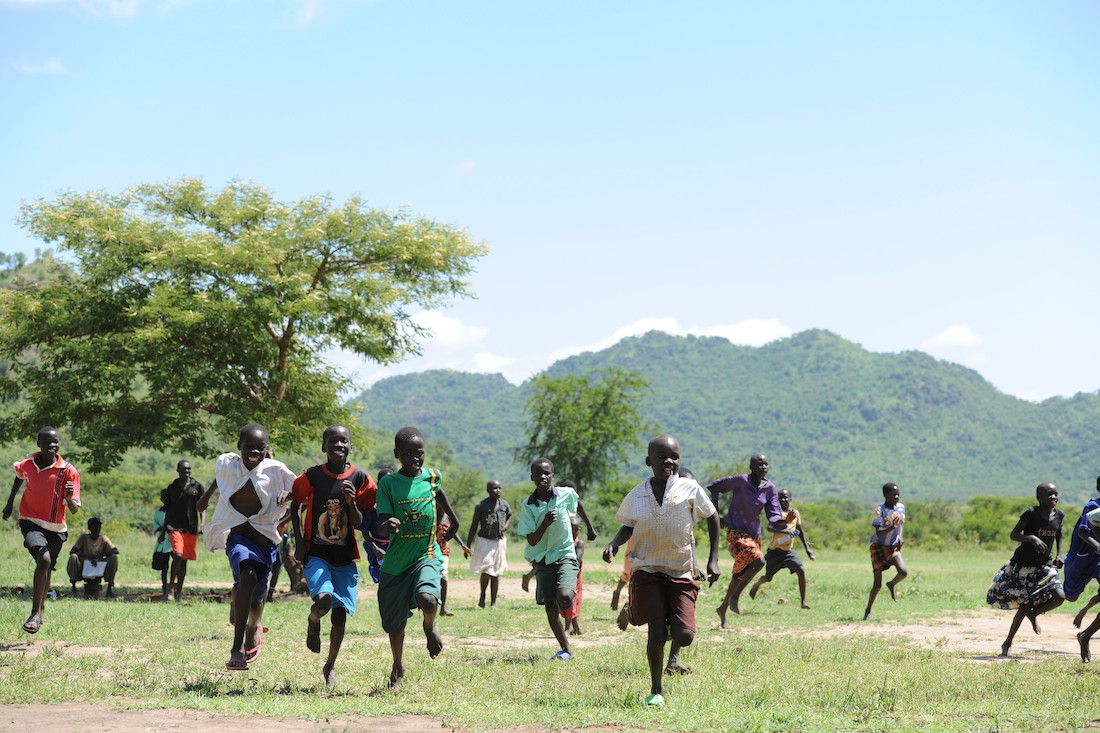Uganda
Children affected by conflict: 600,000 refugees
Budget spent: €660,000
Number of partner organisations: One
Number of projects: One
Total child participants: 1,196 (519 girls and 677 boys)
Total adult participants: 1,234 (815 women and 419 men)
Uganda has experienced a significant influx of refugees during 2016 - people escaping conflicts in neighbouring Burundi, DRC and South Sudan all entered the country over the course of the year. The number of refugees inside Uganda is close to one million at the time of writing - two-thirds (64 per cent) of whom are children and youth.
The security context inside Uganda has remained relatively calm. February's Presidential elections took place peacefully, although small outbreaks of violence were recorded in the run-up to the vote. In April, 17,000 people were displaced the west of the country as a result of a local tribal conflict. At the end of the year, clashes in the west between the army and protestors saw 100 killed and hundreds recorded missing.
Uganda has made progress towards relative peace and stability following years of war - which is why we will cease regular operations in Uganda by the end of 2016. We will, however, remain in the country to work with refugee populations.
Highlights
The Building Skills, Changing Futures II programme was brought to a successful conclusion. The project saw 1,120 young people complete vocational training courses over the course of the year. In addition, 86 students completed a long-term programme. The training courses covered agriculture, business development and setting up Village Savings and Loans Associations (VSLA).
An assessment was undertaken in November to investigate the potential added value of a War Child response inside Uganda for refugees from South Sudan. A gap in the area of psychosocial support was identified and a concept paper developed to outline our potential response. A request to begin a refugee response programme has been submitted to the Office of the Prime Minister.
An exchange meeting on Technical Vocational Education and Training (TVET) was held in Lira in May with colleagues from Uganda, Burundi and DRC. The outcomes will inform War Child’s efforts to further develop its youth programming.
 © Folkert Rinkema
© Folkert RinkemaChallenges
We experienced several delays in the implementation of activities over the course of the year. This was due in part to the challenges we faced establishing a rapid response to the needs of the country's refugee population. As a consequence, low beneficiary attendance was recorded, particularly during the first six months of the year.
Projects
War Child will cease regular programming in Uganda by the end of 2016 because the conflict is now too distant for our methodologies to be effective - those directly affected by the conflict are now reaching adulthood. Measures have been put in place to ensure the effect of our interventions will continue - helping young people in Uganda contribute towards a stable future for their country.
The year also saw us launch a special online interactive timeline featuring the highlights of our work in Uganda over the past twelve years.
Building Skills, Changing Futures: Concluded December 2016.This project enhances the capacity of young people to access employment by providing non-formal education opportunities. As part of our Protracted Crisis project, several hundred young people received either a short term or a long term vocational training course.